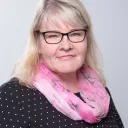Finnish Institute of Occupational Health media release 16 August 2024
The Finnish Institute of Occupational Health’s research project examined how gender, age, socio-economic status and level of education affect the use of occupational health services.
In particular, the majority (62%) of the service events recorded by doctors, nurses and physiotherapists were directed towards those with a lower educational level. In the review years 2021 and 2022, men and women used occupational health care services almost equally, but there were evident differences in factors such as the reasons for the visits.
Different age groups also used the multidisciplinary services of occupational health care in different ways: doctors and nurses mostly had clients aged 40–49, nurses and physiotherapists 50–59 and psychologists 30–39.
The results are presented in a report on occupational health care services, clients and professionals, published by the Finnish Institute of Occupational Health.
The data includes nearly 12 million service events, nearly 800,000 clients and more than 7,000 professionals, and it was collected from the patient register of two service providers during 2019–2022. The study also utilised socio-demographic data by Statistics Finland on clients from the years 2021 and 2022. Measures targeting the workplace and work community were excluded from the survey.
Psychologists’ clients differ from the clients of other professionals
The client group of occupational health psychologists stands out from the clients of other professional groups. There were clearly more psychologist service events among women (66%) than men (34%), and more than half of them were directed at highly educated people. In addition, the clients were younger on average than for other groups of occupational healthcare professionals.
Psychologists accounted for three per cent of all occupational health care service events, and the proportion remained the same in the years under review. The majority of the visits (77%) were counselling and guidance visits.
“It seems that psychologists’ services are primarily used for preventive activities, such as supporting work ability and well-being in various stressful situations or conflicts,” says Sari Nissinen, Chief Specialist at the Finnish Institute of Occupational Health.
Musculoskeletal and respiratory disorders are the two most common reasons for visits
The most common reasons for visiting occupational health care in 2019–2022 were musculoskeletal and connective tissue and respiratory disorders.
“The COVID-19 pandemic and new diagnostic codes probably contributed to respiratory diseases rising to the top of the list overriding musculoskeletal disorders in 2022,” Sari Nissinen explains.
The other most common reasons for visits include mental health and behavioural disorders, eye and ear diseases, injuries and poisoning.
With the exception of respiratory diseases, there were no significant changes in the diagnoses of reasons for visits. For example, the relative proportion of mental health disorders remained constant.
The trend of remote services seems to be rising
The survey also examined the prevalence of remote and local services in 2019–2022. Remote services refer to various digital, telephone, email, video and chat services.
The results show an increase in the share of remote services during the period under review. In 2022, the number of remote and local services were already equal. The jump in remote services was greater on weekends when compared with weekdays, but the number of service events during weekends is small.
“We took the novel approach of considering remote services in particular as trends and long-term developments, which offers a new perspective for healthcare research and service development,” says Sari Nissinen.
Learn more
Further information
- Sari Nissinen, Chief Specialist, +358 (0)43 825 2435, sari.nissinen@ttl.fi





